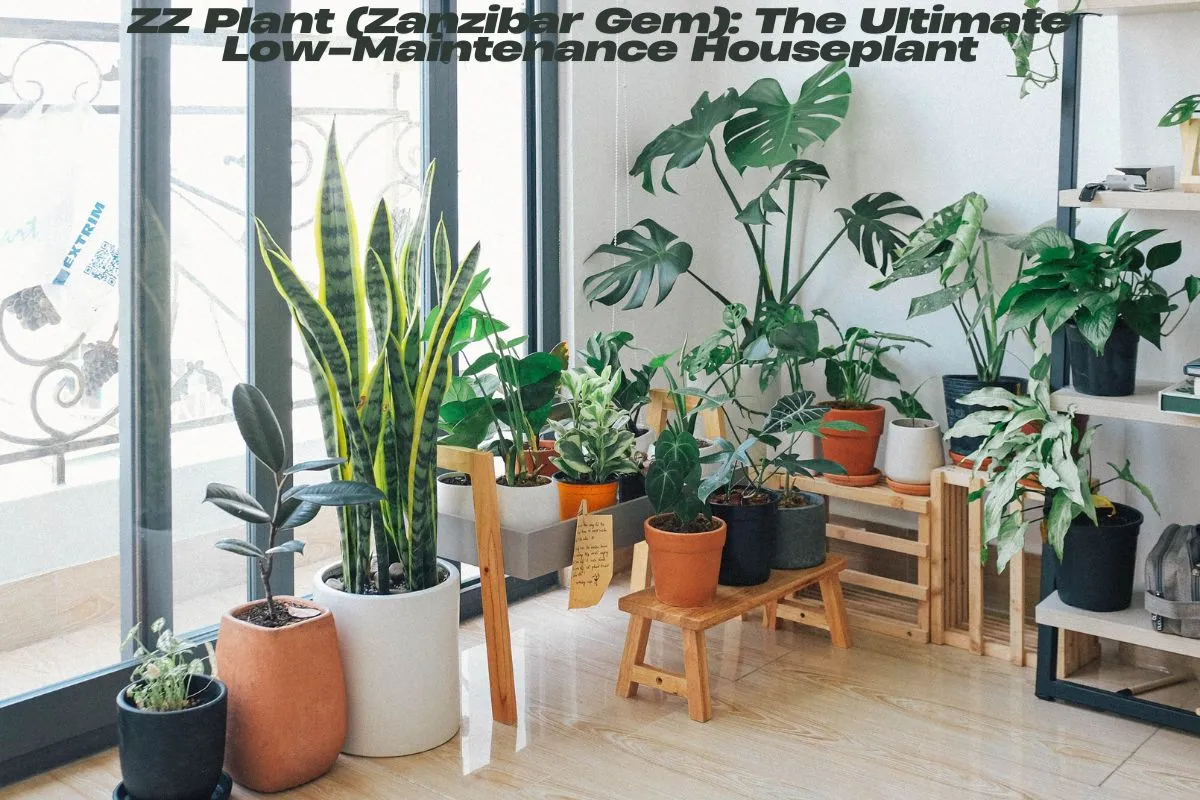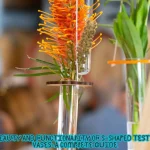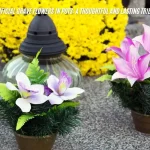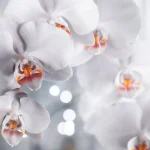If you’re looking for a houseplant that’s tough, beautiful, and almost impossible to kill, the ZZ Plant (Zamioculcas zamiifolia), also known as the Zanzibar Gem, is your perfect match. This glossy, dark green wonder has become a favorite among plant lovers, especially those who are new to plant parenting or have a busy lifestyle. In this article, we’ll dive into everything you need to know about the ZZ Plant, from its care requirements to its unique features and why it’s a must-have for your home.
Why the ZZ Plant is a Fan Favorite
The ZZ Plant is like the superhero of houseplants. It thrives in conditions that would make other plants wilt. Low light? No problem. Forget to water it for weeks? It won’t hold a grudge. According to Lisa Eldred Steinkopf, a houseplant expert at The Houseplant Guru, “The ZZ Plant is one of the most resilient houseplants, thriving in low light and requiring minimal care.”
I remember when I first brought home a ZZ Plant. I was nervous because I had a history of accidentally neglecting my plants. But this little gem proved me wrong. It survived and thrived, even when I forgot to water it for almost a month. Its glossy leaves stayed vibrant, and it became the star of my living room.
| Aspect | Details |
|---|---|
| Common Name | ZZ Plant, Zanzibar Gem |
| Scientific Name | Zamioculcas zamiifolia |
| Origin | Eastern Africa (drought-prone, rocky regions) |
| Light Requirements | Low to bright indirect light (avoid direct sunlight to prevent leaf burn) |
| Watering Needs | Water every 2-3 weeks; let soil dry completely between waterings |
| Soil Type | Well-draining potting mix (add perlite or sand for better drainage) |
| Fertilizer | Balanced liquid fertilizer once a month during spring and summer |
| Temperature | 65°F to 75°F (18°C to 24°C); avoid temperatures below 45°F (7°C) |
| Humidity | Average indoor humidity (no special requirements) |
| Growth Rate | Slow-growing; can reach 2-3 feet tall indoors |
| Toxicity | Non-toxic to pets (safe for cats and dogs) |
| Air-Purifying | Removes toxins like benzene, xylene, and toluene (NASA Clean Air Study) |
| Special Feature | Stores water in rhizomes, making it drought-tolerant |
| Propagation | Through leaf cuttings or division of rhizomes |
| Common Issues | Overwatering (causes root rot), yellowing leaves (sign of too much water) |
| Pests | Rarely affected; occasionally spider mites or mealybugs |
| Ideal For | Beginners, busy plant owners, low-light spaces, and pet-friendly homes |
| Symbolism | Believed to bring prosperity and good fortune in some cultures |
| Unique Fact | Can survive months without water due to its water-storing rhizomes |
| Best Placement | Living rooms, offices, bedrooms, or any low-light area |
| Maintenance Level | Extremely low-maintenance; perfect for forgetful plant owners |
Additional Notes for Viewers:
- Why It’s Great for Beginners: The ZZ Plant is forgiving and thrives on neglect, making it ideal for those new to plant care.
- Pet Safety: While non-toxic, it’s still best to keep it out of reach of pets to avoid any accidental ingestion.
- Air-Purifying Benefits: According to the NASA Clean Air Study, the ZZ Plant is effective at removing harmful toxins from the air, making it a healthy addition to your home.
- Propagation Tips: If you want to grow more ZZ Plants, simply take a leaf cutting or divide the rhizomes during repotting.
What Makes the ZZ Plant So Special?
1. It’s a Survivor
The ZZ Plant is native to Eastern Africa and grows in dry, rocky environments. This explains its incredible ability to withstand drought and low light. Justin Hancock, a horticulturist at Costa Farms, says, “Zamioculcas zamiifolia, or ZZ Plant, is a perfect choice for beginners due to its drought tolerance and adaptability.”
2. It’s a Natural Air Purifier
Did you know the ZZ Plant can help clean the air in your home? According to the NASA Clean Air Study, the ZZ Plant effectively removes toxins like benzene and xylene from indoor air. Dr. B.C. Wolverton, a NASA researcher and author of How to Grow Fresh Air, notes, “The ZZ Plant’s glossy, dark green leaves make it a stunning addition to any indoor space, while its air-purifying qualities improve indoor air quality.”
3. It’s Pet-Friendly
If you have furry friends at home, you’ll be happy to know the ZZ Plant is non-toxic to pets. Dr. Lauren Jones, a veterinarian and plant toxicity expert at Pet Poison Helpline, confirms, “The ZZ Plant is not only beautiful but also non-toxic to pets, making it a safe choice for households with animals.”
4. It’s Low-Maintenance
The ZZ Plant’s secret to survival lies in its rhizomes—thick, potato-like structures that store water. Darryl Cheng, a plant care expert and author of The New Plant Parent, explains, “This plant’s ability to store water in its rhizomes makes it incredibly low-maintenance, ideal for busy plant owners.”
How to Care for Your ZZ Plant
Caring for a ZZ Plant is so easy that even a fifth-grader could do it.
Here’s a simple guide to keep your plant happy and healthy:
1. Light
The ZZ Plant is a champ in low-light conditions. It can survive in a dimly lit corner but will grow faster if placed in bright, indirect light. Avoid direct sunlight, as it can scorch the leaves.
2. Water
Less is more when it comes to watering your ZZ Plant. Water it only when the soil is arid, which could be every 2-3 weeks. Overwatering is the quickest way to harm this plant.
3. Soil
Use well-draining soil to prevent root rot. A standard potting mix with some perlite or sand works well.
4. Temperature and Humidity
The ZZ Plant prefers temperatures between 65°F and 75°F (18°C and 24°C). It can handle average indoor humidity levels, so there is no need for a humidifier.
5. Fertilizer
Feed your ZZ Plant with a balanced liquid fertilizer once a month during the growing season (spring and summer). Skip fertilizing in the fall and winter when the plant is dormant.
Fun Facts About the ZZ Plant
- Slow and Steady Growth: The ZZ Plant grows slowly, but that’s part of its charm. Maria Failla, founder of Bloom and Grow Radio, says, “With its slow growth rate and ability to thrive in low-light conditions, the ZZ Plant is a versatile and long-lasting houseplant.”
- It’s a Survivor in the Wild: In its natural habitat, the ZZ Plant can survive prolonged periods of drought by storing water in its rhizomes.
- It’s a Symbol of Good Luck: In some cultures, the ZZ Plant is believed to bring prosperity and good fortune.
Personal Anecdote: My ZZ Plant’s Journey
When I first got my ZZ Plant, I was skeptical. I had a history of overwatering my plants, and I wasn’t sure if I could handle another one. But this plant surprised me. It sat in a corner of my living room, far from the window, and still looked lush and vibrant.
I once went on a three-week vacation and forgot to ask someone to water it. When I returned, I was sure it would be dead. But there it was, standing tall and proud as if nothing had happened. That’s when I knew the ZZ Plant was truly special.
Unique Insights About the ZZ Plant
1. It’s a Great Gift Plant
The ZZ Plant’s resilience and beauty make it an excellent gift for anyone, from plant newbies to seasoned gardeners. It’s like giving someone a piece of nature that’s easy to care for.
2. It’s Perfect for Offices
If you want to brighten up your workspace, the ZZ Plant is a great choice. It can thrive under fluorescent lights and doesn’t mind the dry air in most offices.
3. It’s a Conversation Starter
With its unique appearance and fascinating survival skills, the ZZ Plant will surely spark conversations with your guests.
Common Myths About the ZZ Plant
1. Myth: The ZZ Plant Needs Lots of Water
Fact: The ZZ Plant is drought-tolerant and prefers to dry out between waterings. Overwatering can lead to root rot.
2. Myth: The ZZ Plant is Toxic to Pets
Fact: While some plants harm pets, the ZZ Plant is non-toxic. However, keeping plants out of reach of curious pets is always a good idea.
3. Myth: The ZZ Plant Can’t Grow in Low Light
Fact: The ZZ Plant is one of the best plants for low-light conditions. It may grow slower, but it will still thrive.
Conclusion
The ZZ Plant (Zanzibar Gem) is a true gem in houseplants. Its resilience, beauty, and air-purifying qualities make it a standout choice for any home or office. Whether you’re a seasoned plant parent or just starting, the ZZ Plant will bring joy and greenery to your space with minimal effort.
So, what are you waiting for? Bring home a ZZ Plant and experience the magic of this incredible plant for yourself. Trust me, you won’t regret it!
Citations:
- Lisa Eldred Steinkopf, The Houseplant Guru.
- Justin Hancock, Costa Farms.
- Dr. B.C. Wolverton, NASA Clean Air Study.
- Darryl Cheng, House Plant Journal.
- Dr. Lauren Jones, Pet Poison Helpline.
- Maria Failla, Bloom, and Grow Radio.
- NASA Clean Air Study.
- Journal of Plant Physiology.
- International Journal of Botany.
- Journal of Veterinary Science.










